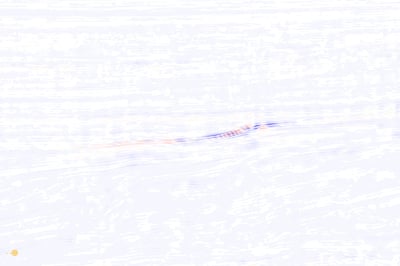Gradient and Intercept volumes can be generated from the angle stacks as discussed in Part 3. The Gradient and Intercept volumes can be combined in a number of ways to generate different AVO attributes, such as AVO Product or Reflection coefficient difference.
AVO Product
The AVO Product is simply Gradient * Intercept. It has been found to nicely highlight AVO class III responses (Rutherford & Williams, 1989). Soft sands with hydrocarbons will have a strong negative intercept and a strong negative gradient, so they will show a strong positive response in the AVO product. Non-hydrocarbon bearing areas will be weak or have negative products (Avseth et al., 2010)
The AVO product can be calculated in GeoTeric simply using the Parser expression:
The AVO product can be calculated in GeoTeric simply using the Parser expression:
(im1*im2)/scale
where im1=gradient and im2=intercept.
where im1=gradient and im2=intercept.
The scale factor will need to be adjusted depending on the data type and dynamic range of the input volumes.
AVO Product showing a class III anomaly in the Rosewall-Calliance dataset
Reflection coefficient difference
Castagna and Smith (1994) compared different AVO attributes, and found that the reflection coefficient difference, Rp - Rs, might be a better gas-sand discriminator than the AVO product, because it will work for any type of sand, whether these are AVO class I, II or III. They verified that Rp - Rscan be expressed in terms of intercept and gradient as follows:
Rp- Rs ≈ (R(0) + G)/2
Or in Geoteric’s Parser language:
(im1+im2)/2
where im1=gradient and im2=intercept.
where im1=gradient and im2=intercept.


